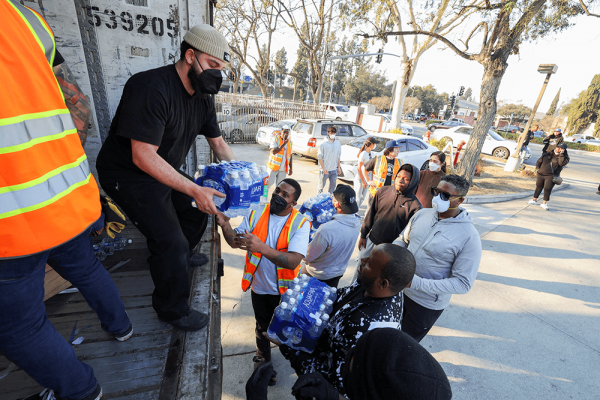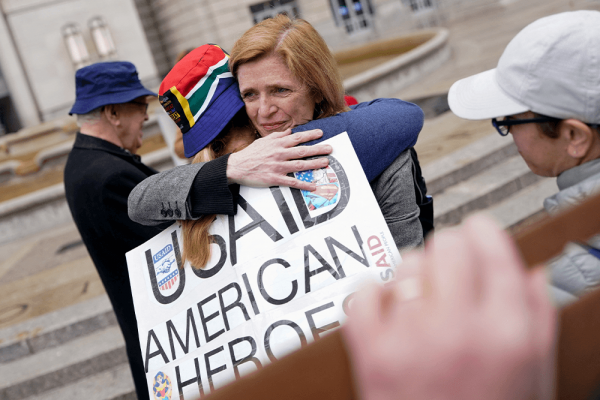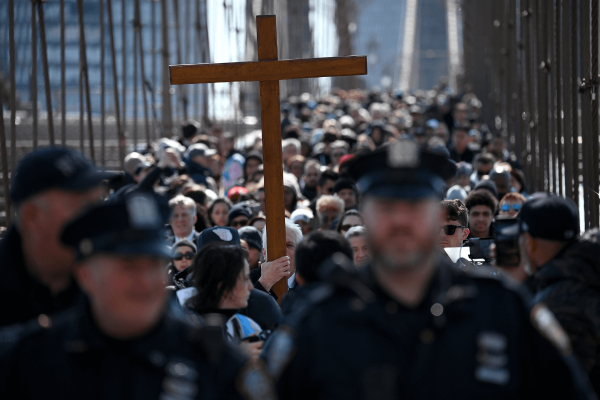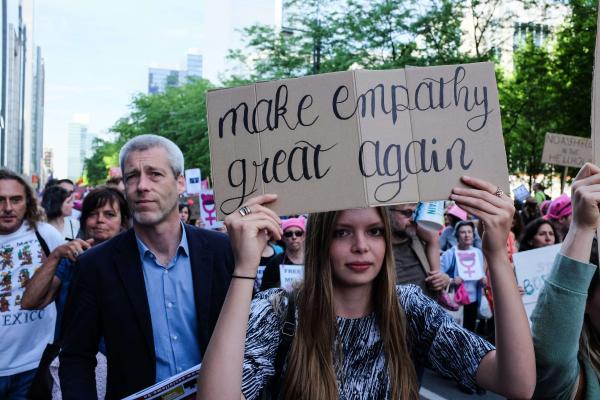It was 32 years ago that guerillas and armed forces rolled into the Elsy Torreglosa Gallego’s small Colombian town and violence erupted.
Torreglosa climbed on a bus with four children in tow, leaving behind her family, her farm, and everything she had built to seek a new life in Medellín, one of Colombia’s biggest cities.
“The army arrived, then one day arrived the guerillas, another day arrived the paramilitaries, and we went, ‘we will not stay here. We had to leave,’" she told me in Spanish.
She fled to the city in 1986 with hopes of peace. What she found instead was a city that didn’t want her, a city without jobs to support her four children, and a city that would toss her out on the street just weeks after finding a new home.
And like tens of thousands of others fleeing the Colombian armed conflict, Torreglosa had nowhere to go.
Except for Barrio Moravia: the place for what Colombia discarded.
elsy_torreglosa_portrait_3_1.jpg
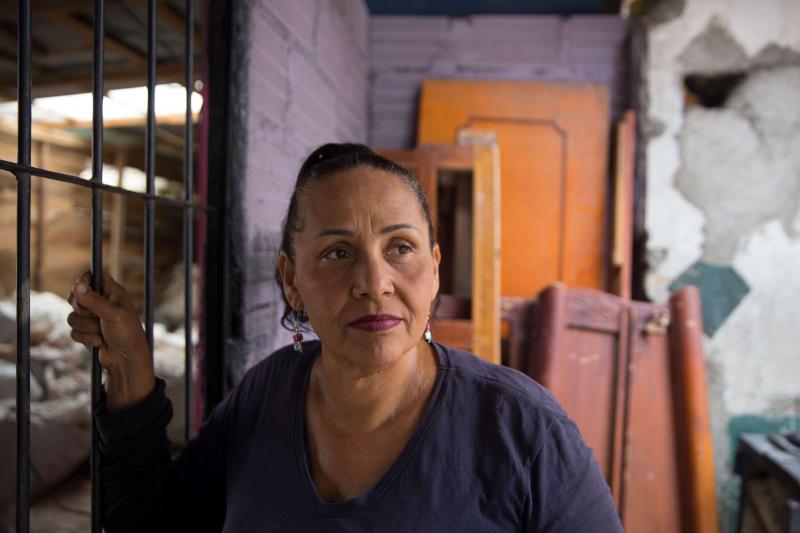
Makings of Moravia
Moravia, a dense Medellín neighborhood pressed up against the Medellín River was once no more than a dense swampland. But in the 1960s it became a site for illegal garbage dumping and soon amassed a mountain of trash and recyclables 60 meters high.
As violent clashes from armed conflict forced Colombians in rural areas to flee to cities without possessions or a place to go, thousands of displaced people turned to the mountain of Medellín’s trash, the “Morro,” building informal settlements, homes, and businesses from their recyclables.
“They came here and the only place where they could build their houses was the garbage,” Diego Ortiz, an activist working with the community for the past decade, said.
archive_1968_2.jpg

The migrant colony tucked away in the heart of the city now comprises more than 40,000 people.
It’s faced rampant violence, fires, xenophobia — and it’s faced forced displacements within itself — yet today it still stands a shining example of urban transformation. To understand its rise and hope as a transformation model, one should first understand how it was forged in crisis.
Colombia’s ‘invisible crisis’
Colombia is a country with more internally displaced people (IDPs) than any other, including war-torn Syria, according to the United Nations. Dubbed the “invisible crisis,” conflict in the country has internally displaced more than 7.5 million Colombians and hundreds of thousands per year continue to abandon their homes and their lives amid violence.
World leaders have for decades channeled resources into halting the Colombian armed conflict. The U.S. government itself funneled $10 billion into “Plan Colombia,” an initiative beginning in 2000, intended to end violent clashes and eliminate production of coca, the crop used to produce cocaine. But those efforts have been met with mixed results: Peace in Colombia still teeters precariously and coca production hit a record high in 2017. And IDPs like Torreglosa have continued flee to big cities and settlements like Moravia that have sprouted up in the wake of continued violence.
Those migrant colonies have historically been met with stigmatization by other Colombians, according to Gimena Sánchez-Garzoli, Andes director for the Washington Office of Latin America.
“They're seen as lesser,” Sánchez said. “But it's weird because you look at the response for natural disasters, it's completely different. Somehow they're seen as neutral victims, but these others victims [of violence by armed groups] are problematic victims, or ‘tainted’ somehow.”
And Moravia is no exception. Defined for years by conflict, controversy, and clashes, it’s still often denoted as a place of violence.
When Colombian drug lord Pablo Escobar rose to power in the 1970s and 80s, and rivaling gangs, cartels, and armed groups brought forth a war in Medellín, the neighborhood of Moravia became the hotbed for danger and drug trafficking.
Young people in the neighborhood formed criminal gangs called “combos,” many of which worked for the famous drug lord, and illegal armed groups like the the United Self-Defense Forces of Colombia (AUC) dominated Moravia.
archive_1980.jpg

So when Torreglosa arrived in the city in 1986, she landed in a place more violent than the one she left.
“Militias and the AUC, in front of my house they killed a young boy,” she said. “They cut off his head and left the corpse in front of my house … We and children saw all of this.”
But with nowhere else to go, migrants continued to flock to the area — escaping the certain death of paramilitary “kill lists” for the unknown dangers of the “Morro.” But health and living conditions in Moravia grew dire in the 1970s and 80s as the neighborhood began to expand with Colombia’s violence.
Toxic gases from decomposing waste rose like a cloud over the area. Around 30 percent of the structures, little more than shacks, were deemed dangerous to live in, with an average of 4.8 people living in each room.
The majority of the population was unemployed or living in poverty and the neighborhood was described as “children fighting with buzzards for leftovers.”
A new life for the ‘Morro’
Today, the once bloodsoaked streets outside Torreglosa’s home have taken on a different rhythm.
Children dressed in plaid uniforms clutch their parents’ hands as they walk to school, music echoes out of brightly colored buildings while plants and urban projects speckle the neighborhood.
moravia_streets_2_1_1.jpg
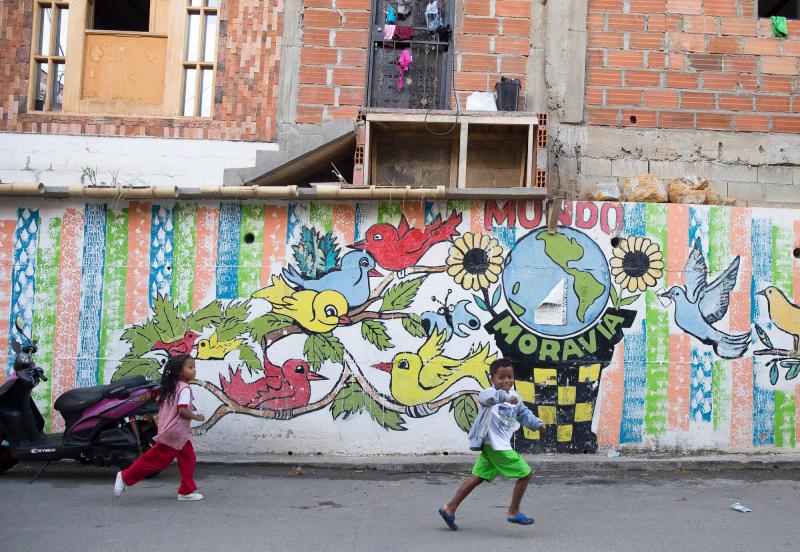
“Everywhere in Colombia, the whole process of peace and displacement is not in the jungle; it's not on some tables where politicians sit together; it's really in the cities where these communities have to come back together,” said Albert Kreisel, a German architect working on public development initiatives in Moravia.
The foundation for the transformation of the neighborhood was, in a way, laid in Moravia’s inception when Jesuit priests arrived in 1967.
They spurred a more concrete vision of community organizing and the construction of public spaces like churches, sports courts, and schools.
The social leaders also encouraged community members to push back on government efforts to evict them from their informal settlements, something they did for decades to come.
The real shift, though, came in 2004. Around the same time the city mayor and Colombian government dubbed Moravia a “public disaster,” community organizers and government officials unveiled plans for change — and with them, public projects.
morro_garbage_garden_1_1.jpg
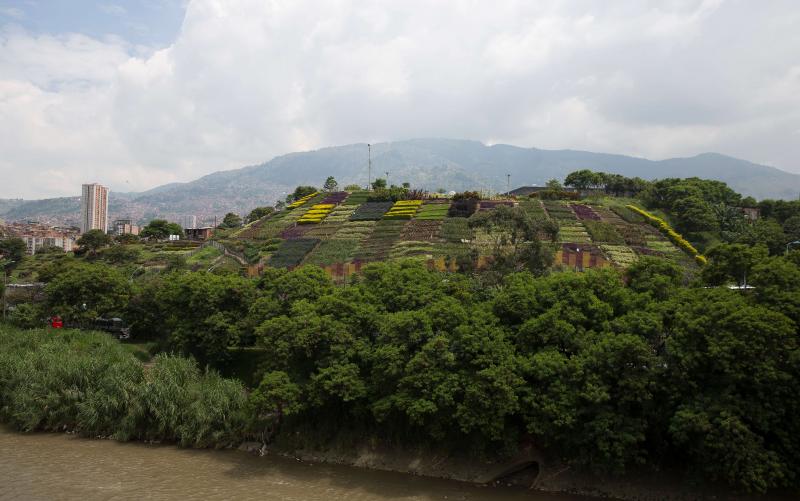
Between the years 2005 and 2012, nearly $4 million U.S. dollars were invested in the transformation of the Morro, according to Colombian newspaper, El Colombiano. That investment in a community that says it’s been pushed to the side by municipal governments for the majority of its history was one that allowed the community to pivot from its violent past.
The heart of that transformation has been the construction of a community center, which now brims with children and community members at all hours of the day. It’s home to organizations that use art and education to heal traumas, preserve cultures that would otherwise be lost, and provide an area for aid.
Diego Ortiz’s organization is one of them. Mangle, which is dedicated to teaching children the Afro-Brazilian martial art dance Capoeira, uses art to provide legal alternatives to kids who might otherwise gravitate toward drug dealing or gangs.
“This cultural center ... is a place where they can be free,” Ortiz said. “They ran from violence and that makes them slaves, slaves of violence because they did not have a choice. This cultural center is the place where they can be free, where they can be safe.”
Other organizations center on sparking open dialogues between community members or constructing projects to further develop the neighborhood.
With a rising wave of Venezuelans migrating to Colombia, migrant organizations like Colonia Venezolana en Colombia have used the center to host dialogues to dispel a growing wave of xenophobia the migrants face. Others, like Urban Lab Medellin Berlin, started in 2013 by German architect Albert Kreisel, have focused on the continued development of the neighborhood.
The “Morro,” once a growing environmental risk, has transformed into one of the city’s largest public gardens, which has produced more than 50,000 plants of 47 species.
The garden, along with the greenhouse perched on the top, is managed by Torreglosa’s organization, Cojardicom, a group of single mothers who for years pushed for in the environmental change in Moravia.
morro_greenhouse_1_1.jpg
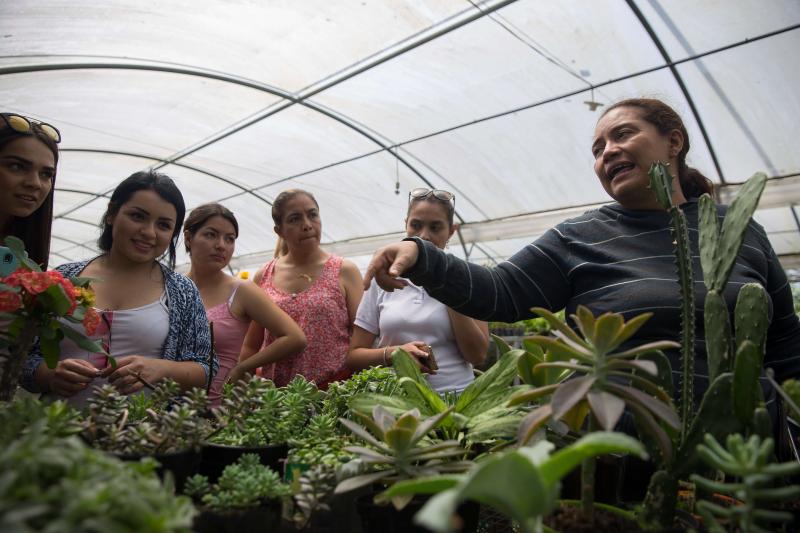
Today the women, with support from the mayor’s office and the cultural center, act as guardians of perhaps the most visible sign of the neighborhood’s transformation: overhanging trees, tightly groomed bushes, and bright tropical plants that speckle to “Morro” and the surrounding city.
Cindy Muñoz is one of the women who tends to that land, which has defined generations of her family. She was born in Moravia 30 years ago to displaced parents who built their lives on the Morro out of plastic recyclables.
“No one has lived through this poverty, this change like this neighborhood has in years past,” Muñoz said. “There is something very gratifying about saying 'Look at Moravia, it was so-so at hours, then it was something very beautiful.’"
cindy_munoz_1_1.jpg

It was in that change, too, that Torreglosa found her new life in Colombia.
Before she became a leader of the neighborhood’s social transformation, she worked selling empanadas and buñuelos to support herself and her children.
“I had to pay, work and pay,” she said. “There were days where I did not sleep. That course continued, and the weekends I didn't sleep.”
Little more than two weeks after she found a home in Medellín, she was evicted to the streets, only saved by a community leader who offered her a home and work in community service.
It was members of the community like Torreglosa who began asking the question: What must we do to change the path this place is going down?
Slowly, with these new initiatives and investments in the neighborhoods transformation, the bloodshed washed away and the mish-mash of cultures that make up the colony arrived at a time of peace many had never known before.
Today, Torreglosa lives with her family nestled in a crook of the neighborhood. On any given day, she can be found on the top of the “Morro,” preening plants inside her greenhouse or rolling carts of recyclables through the streets she once feared to walk.
“It's a barrio that the same people we see here constructed,” she said. “It's a neighborhood I love with all of my heart, one that I have fought to transform.”
morro_greenhouse_2_1.jpg
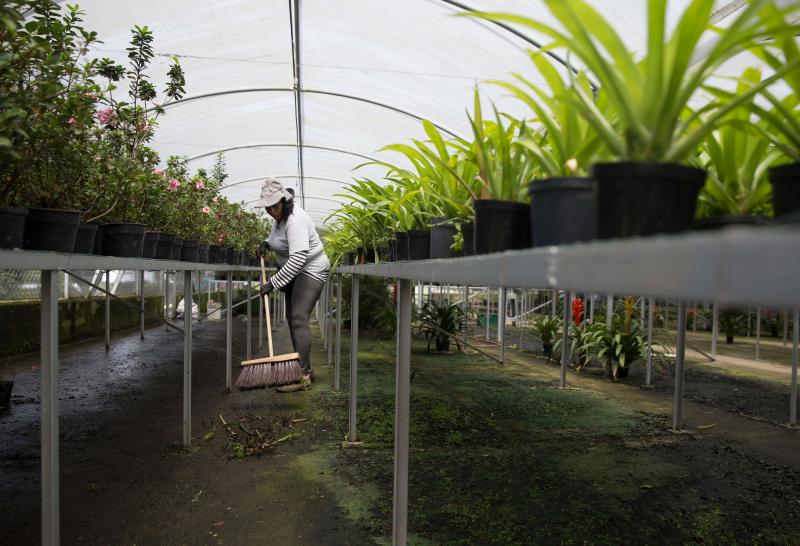
Displacing the displaced
But the radical transformation has brought with it challenges of its own.
A 63 percent unemployment rate contributes to continued poverty throughout the community. Thousands are unable to return to their still-unstable homes and struggle to cling onto the customs the left behind.
And as the city of Medellín develops, residents face being forcibly displaced once again.
Over the course of Moravia’s history, people in the neighborhood have clashed with the city’s government as it has evicted thousands from their informal settlements on the “Morro” with each health crisis, fire, or development project. Periodically, they’ve been moved from the heart of the community to the lesser-developed outskirts.
“It's a very negative vision it had, the city, for this area,” said María Yepes, spokesperson for the Cultural Center of Development of Moravia. “When the people began living in this area, the government did nothing to provide opportunities for the people to stay. Because the idea was for the people to not stay here, for them to go.”
And those displacements may only continue. Long-term city plans of the neighborhood show proposed demolition, construction, and development in areas that would displace large swathes of people.
“There is a lot of economic interest in this because, since the city has grown so quick, this is the center nowadays,” said Kreisel, the German architect and Moravia community organizer.
Despite the complex web of fears and the challenges that make up the small piece of the city, inhabitants of Moravia look at their home as a success, a colony sewed together by carnage, by pain, and by hopes for rebirth.
elsy_torreglosa_work_1.jpg
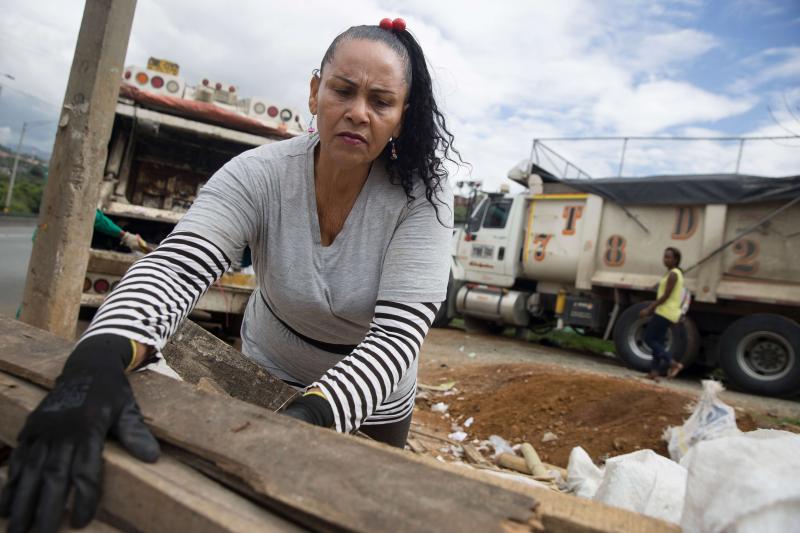
And as more migrants continue to gravitate toward the neighborhood fleeing everything from growing tensions in rural areas to economic crisis in Venezuela, Moravians hope to preserve home they constructed from nothing.
“Now I hope for the transformation of this neighborhood,” Torreglosa said. “That with the Moravians here, that they won't continue to be displaced. That we will continue to be Moravia. Because here in Moravia, it's the best neighborhood in the city of Medellín.”
Got something to say about what you're reading? We value your feedback!


